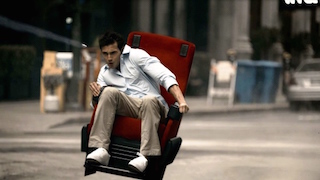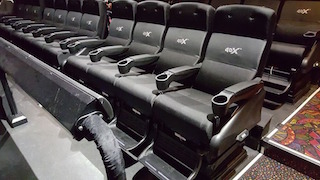 Immersive cinema seating is one of the fastest growing trends in mainstream motion picture exhibition and shows no signs of slowing. Translating the action on the screen into what a viewer experiences in the seat is no simple task and requires the hard work of many talented people. To learn more about that process, I recently spoke, via email, with Catherine Yi, creative director of 4DX America.
Immersive cinema seating is one of the fastest growing trends in mainstream motion picture exhibition and shows no signs of slowing. Translating the action on the screen into what a viewer experiences in the seat is no simple task and requires the hard work of many talented people. To learn more about that process, I recently spoke, via email, with Catherine Yi, creative director of 4DX America.
Digital Cinema Report: What is your role as creative director at 4DX America?
Catherine Yi: I lead the 4DX editing team at our i-studio, working alongside studios, post-production teams and filmmakers throughout the entire 4DX creative process.
DCR: What kinds of scenes or settings lend themselves to 4DX?
CY: Contrary to what people might think, almost every scene in any film can lend itself as a great canvas for 4DX. As long as we are adding to the storytelling, I think there doesn't necessarily have to be a big action sequence for the effects to feel appropriate. It can be laid in where the small details are like doors closing or elevators buzzing. That said, some of our favorite scenes or settings include flying sequences because with a big gust of fan, it gives you a real sensation of speed and movement.
DCR: What kind of movie action has proven to be a challenge to translate for immersive seat action?
CY: Floating in space or water can be difficult to translate because you can't have the seats continuously in motion, literally mimicking what's on screen the entire film. You have to make some creative decisions and decide when to ease in and out of those motions as to not disturb the audience. You have to decide when it's appropriate to "rock the boat" and when it's better to subtly fade the motion out. To really immerse your audience, sometimes less can be more.
DCR: Who actually does the work of coordinating the immersive experience with the action on the screen?
CY: The 4DX editors at our i-Studio, either here in the states or at our headquarters in South Korea, are entirely responsible for creating the 4DX effects for every film we render. Typically, studio executives or directors visit our private screening rooms at our lab to quality check the 4D renditions of their films once the editorial is complete. From there, we either process more edits or receive the final approval if no further edits or additions are needed.
DCR: Is there a danger that the experience you provide might distract from the movie experience itself?
CY: As editors, we’re extremely mindful to stay true to the director and studios’ visions when we’re making those creative decisions about where to place or withhold effects throughout the film. The biggest thing we keep in mind is how we can use our technologies to help enhance the storytelling. We want to add value to the experience of the film, not take away or distract. The more seamlessly we can work in the effect, the more immersive the 4DX experience.
DCR: How many studios/producers currently work with you on creating the immersive experience?
CY: We work with all the major Hollywood studios as well as a great mix of local and independent studios and producers from around the world.
DCR: How long does that creative process take for a typical feature film?
CY: The conversation with the studios starts as early as possible, usually well before we receive the final cut of the movie. Once the movie is finalized from the studio side, we review and start editing and adding 4DX effects right away. The turnaround time varies per title, as each film will require different volumes of work.
 DCR: How early in the film production process does your work begin?
DCR: How early in the film production process does your work begin?
CY: The timing that the studios bring us into the conversation varies, however we are always pushing to be included as early as possible. You might have seen the news recently that the new film We Kill Death is being produced specifically for the 4DX format. We hope that other creatives and filmmakers will follow their lead.
DCR: How many theatres currently have at least one screen outfitted with 4DX seating?
CY: As of today, we’re at 315 theaters around the world in 42 countries, operating over 40,000 4DX motion-synchronized seats. We’re actually now in the midst of an aggressive expansion plan in the U.S. with plans to reach 500 theaters by the end of 2017. Come 2018, we hope to be operating in over 500 theaters with 60 different exhibitors.
DCR: How big do you believe the overall market is for this technology?
CY: We essentially see endless possibilities for the format and foresee a future where every exhibitor provides its guests a chance to explore various formats, including 4DX. Technology is constantly evolving and advancing, and we don’t see why cinema or entertainment technology should stay the same. Our editors see the constant pioneering and innovations in the industry as exciting and evergreen. With time, our technology will surely improve, opening even more opportunities and markets for 4DX.
DCR: How, if at all, will the immersive theatre experience change?
CY: We see many exciting things happening in the space in the near future, especially with the intense spotlight on virtual reality, immersive seating and screens. The immersive theatre experience must continue to evolve and grow to keep the theatre-going experience alive and to continue to drive audiences out to the movies.
DCR: What’s next for CJ 4DPlex?
CY: With the recent merge with our sister company, Simuline, we plan to expand the 4DX reach even further than indoor movie theaters to include a vast array of markets. Think VR, attractions etc.
